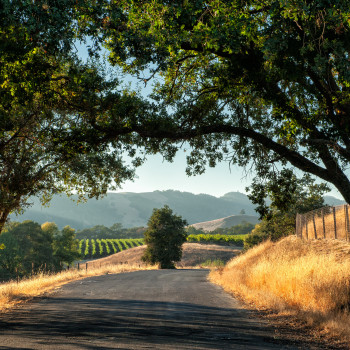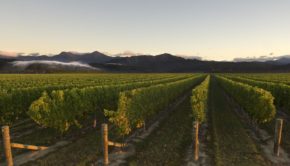ShelfLife Tasting: Seeking value in California
11 March 2015
It’s all hit the euro at once: Greece, Ukraine, Isil in Libya and the ECB’s quantitative easing. In mid 2014, you could get up to $1.38 for your euro; at the time of writing, it was $1.13. That’s the lowest the euro has been for over six years – it’s worth less than it was during much of the financial crash.
This may not improve. The travails of Greece put the euro under pressure a few years ago, but the currency recovered. Yet it’s the nature of financial crises that if they start to recur, especially in a slow growth economy like the eurozone, bouncebackability is undermined and recovery tends to be less complete every time. If Greece exits the euro, the currency may fall further in the short term, but firm up later as the threat of periodic crisis recedes. If Greece stays, confidence in the eurozone and its currency may remain at an ongoing low, as investors and traders factor in the cost to the eurozone of the various convulsions its difficulties may cause. And that’s before we count the cost of the other aforementioned factors.
Which brings us to California wine. Or rather to its price, which is likely to be up to 30% higher through 2015, as existing stock runs out. Some in the Irish wine trade were, in fact, surprised that the Wine Institute of California actually staged their annual tasting in Dublin this year. It shows a gratifying faith in the Irish consumer’s willingness to buy California wine for its quality rather than merely on price but it’s not going to be an easy sell. It won’t help that premium wines will be hardest hit, because the government’s tax take is a lower proportion of the bottle price. With cheaper wine, the cost of the actual wine is less than the tax, so a rise won’t impact on the retail price so much.
We’ll see. Some experts have suggested that US producers expected to sell more wine this year to Russia and China than is now likely to be the case and that some of this product may be available to the eurozone. That extra stock could balance things a bit – but I wouldn’t hold my breath.
Here’s some of what we sampled at the recent tasting. Most are available at independent off-licences and prices are retail. They are not cheap wines but we’ve tried to highlight those that offer decent value for the money.
Whites
Clay Station Vineyards Viognier 2012 (Distinctive Drinks, independents €18). One of the best whites of the day, with floral notes, good alcohol balance and lingering flavours.
Murphy Goode Chardonnay 2012 (Celtic Whiskey Shop, €20). Ripe lemon and light toast flavours; enjoyable.
Kendall Jackson Vintner’s Reserve Chardonnay 2013 (O’Briens, €22). Lots of tasty citrus fruit and very good balance; a treat that delivers.
Geyser Peak Chardonnay 2012 (Barry Fitzwilliam €15, independents, some multiples). Evenly paced, elegant wine at a fair price.
Reds
Concannon Petite Sirah 2008 (Barry Fitzwilliam €16, independents, some Londis stores). Tasty, blackberry flavours make this one of the nicest Californians around.
Clay Station Vineyards Cabernet Sauvignon 2012 (Distinctive Drinks, Independents, €14). Clean, harmonious dark fruit – and good value for money.
Morgan Bay Cellars 2012 (Classic Drinks €15; independents). Fresh blackcurrant and berry fruit and decent value.
Clay Station Loredona Pinot Noir 2011 (Distinctive Drinks €20). Decent, characterful pinot at a fair price.
Ravenswood Old Vine Zinfandel 2011 (Barry Fitzwilliam €19, independents, some multiples). Zinfandel can easily reach 16% alcohol and that doesn’t always please consumers. A lot of producers have reined back the levels but often at the expense of concentration and sometimes by leaving in quite a bit of unwanted residual sugar. This old favourite, with its soft berry fruit flavours, isn’t bad.
Brazin Zinfandel 2011 (Cassidy €23, independents, restaurants). There’s 15% alcohol here but the concentration matches up and the brambly fruit is surpisingly fresh and tasty. Why not enjoy its character and just drink less of it?
Kendall Jackson Vintner’s Reserve Zinfandel 2011 (O’Briens, €22.99). Easy style – what you’d call a warm country wine. Not especially cheap for the style but it’s very enjoyable.
Trinchero Menage a Trois Red 2012 (Findlater €13, independents, some multiples). Tasty berry and plum make this a good companion for red meat.
Liberty School Cabernet Sauvignon 2009 (Louis Albrouze €19, independents). Decent structure and concentration for the money, with lively dark fruits.
Top End Picks
Many of the wines on show were well over €30 but if you are looking for a treat, here’s a tasty trio.
Benzinger Merlot 2010 (Febvre €31.50, independents, restaurants). Reminiscent of a fine St. Emilion, this is drinking perfectly now and balances its 14.5% alcohol with smooth blackcurrant and plum fruits.
Black Stallion Cabernet Sauvignon 2010 (Cassidy €39, independents, restaurants). Fresh blackcurrant and plum in well supporting tannins. Drink now or keep a while.
Cambria Tepusquet Vineyard Syrah 2012 (O’Briens €24.99). Classic black olive and plum flavours, with a tasty juiciness lingering on the palate. Pricey it may be but it delivers on the money.
Wine Trade Ups and Downs
Ups
The demise of Searsons won’t deprive Irish consumers of one of the best prosecco names on the market. It’s been announced that Bisol, one of the top Valdobbiadene makers, is moving to Classic Drinks. Bisol’s Jeio prosecco has long been a rival to champagne on special occasions and Classic will now have exclusive distribution.
Meantime, Richmond Marketing will be taking over the agency for Spain’s Faustino and Portia wines. Faustino is one of Ireland’s most popular Rioja brands, with its reserve wines offering an attractive blend of traditional style with keen pricing. Portia wines, also owned by Faustino, are less well known but Richmond plans to raise the profile of this good value Ribera del Duero label.
The falling euro is likely to boost European wine sales domestically and abroad and luckily the fine summers of 2013 and 2014 mean there should be plenty of wine to buy. Crianza and Reserva Rioja are likely to increase market share while rosé wine from the south of France has also been growing. Greek exports are expected to grow and to become more competitive, and already several Irish outlets, such as Celtic Whiskey Shop, are stocking Greek labels. Better exchange rates than that against the dollar may also encourage consumers to sample wines from the eastern Mediterranean, including those from Lebanon and Israel.
Downs
Even as California wines threaten to become pricier comes news that a top Irish favourite, Australian shiraz, may be more expensive this year. Barossa Valley experienced severe frosts last October and its shiraz crop could be down by 15% at a time when light harvests in 2013 and 2014 have already reduced supply of the wine. As the red wine harvest hasn’t yet begun, the full picture, including that from other regions, is yet to become clear.
Irish wine buffs who plan a visit to London’s Vinopolis had better do it soon as the 16 year old attraction will close at the end of 2015. The venue, which offered “self guided wine tasting experienced”, along with special tastings and master classes, is to be redeveloped as a premium retail centre. While believed to have been profitable, the venture was probably a victim of the same boom and bust cycle in consumer wine education as led to the wind up of Ireland’s Wine Development Board and the reduction in once hugely popular wine courses. People are drinking as much wine as ever, but the pursuit of specialised knowledge is not as fashionable among consumers as it was 10 years or so ago.




 Print
Print




Fans 0
Followers